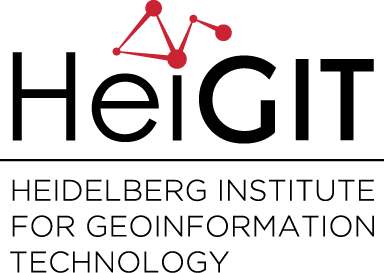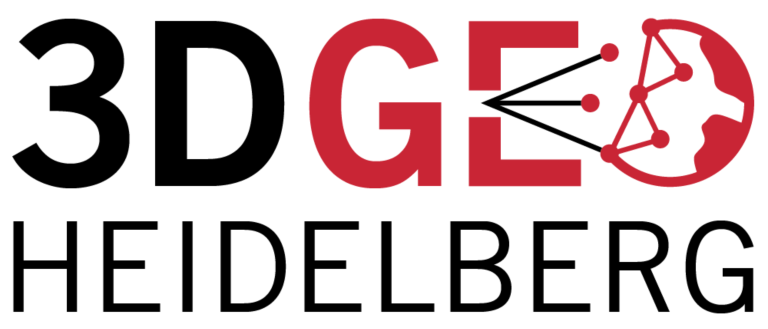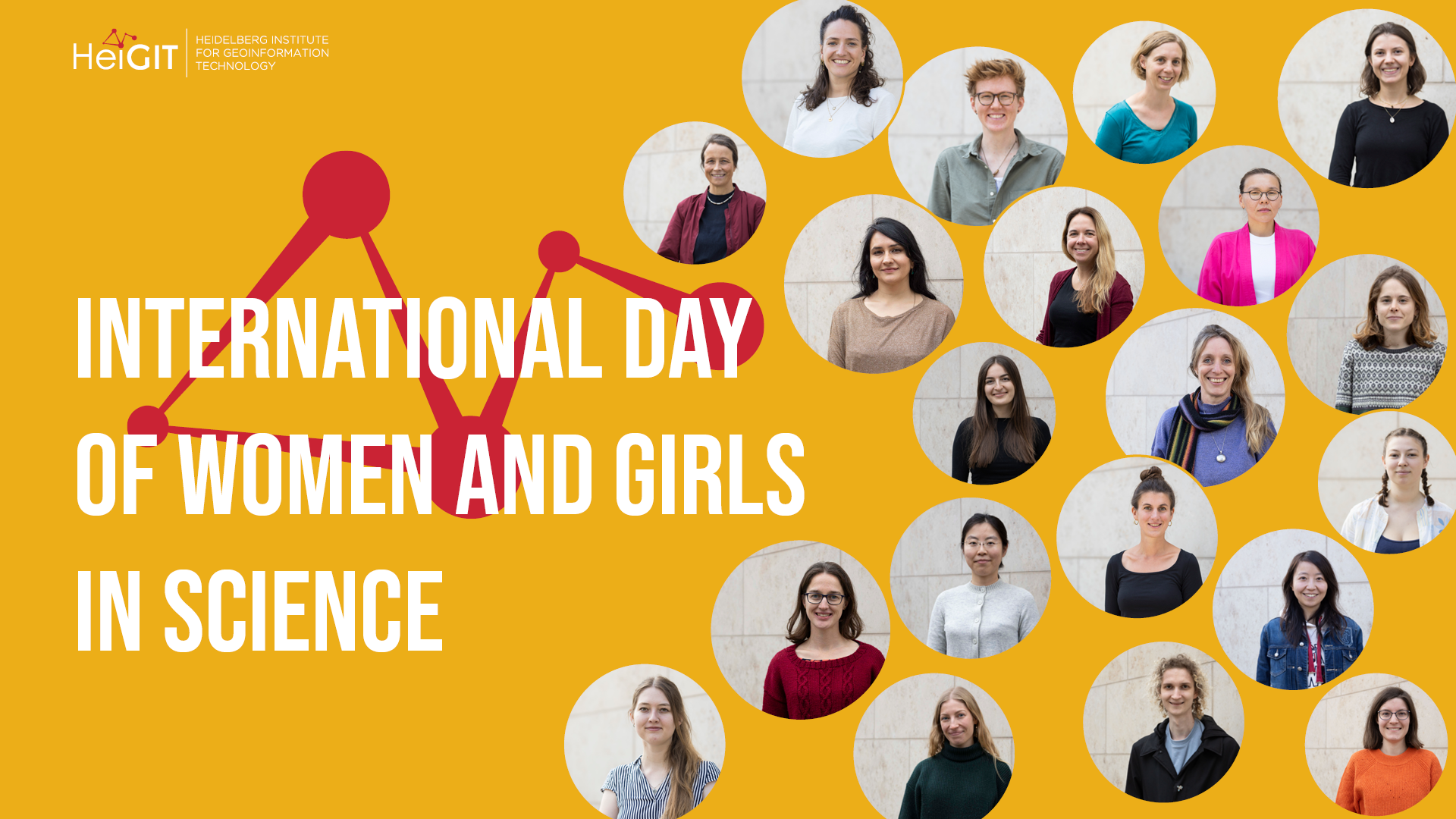Today, on February 11th, together with the International Day of Women and Girls in Science, we are celebrating women and girls in science, technology, engineering, and mathematics (STEM). Established by the United Nations, this day underscores the need for gender equality in scientific fields and recognizes the contributions of women scientists around the world.
Despite progress, women and girls are still underrepresented in many areas of science, facing gender bias that can intersect with other factors, limited access to opportunities, and societal expectations. This day is a chance to rethink how we approach work—creating inclusive environments that empower women to pursue the professional paths they envision.
Geoinformatics is a dynamic and evolving field that blends geography, data science, and technology to study and model the Earth. While the discipline offers exciting opportunities for innovation and impact, it also reflects broader societal challenges. Let’s be fair—it isn’t exactly the most female-dominated scientific field. Acknowledging the issue is the first step toward change. At HeiGIT, we’re working to break barriers, not just between fundamental research and real-world applications, but in all aspects of our work. Women here contribute across many dimensions, from data analysis and research to software development, teaching, and project management.
Through a series of interviews, we explore the diverse journeys, inspirations, and challenges of some of our colleagues. I spoke with Anne, a data scientist working in humanitarian aid; Christina, a researcher focusing on geoinformation science and mobility analysis; Celina, a student assistant supporting Anticipatory Action projects and organizing Mapathons; Danielle, a data scientist developing the Climate Action Dashboard; Maria, a scientific manager with the focus on Climate Action; Sukanya, an AI lead for social good; and Yulia, a machine learning researcher. Their experiences showcase just a fraction of the work women at HeiGIT do every day.
Why science?
The paths into geospatial sciences and technology are as varied as the landscapes they help map and analyze. There is no single correct path to choosing a career. Some knew early on that they wanted to work in this field, like Yulia, who grew up surrounded by satellite imagery through her parents’ work and later pursued a PhD in computational geography. Others, like Christina explored multiple disciplines—initially studying architecture and environmental science before ultimately finding her way into geoinformatics. Interestingly, she opened our conversation by saying she never wanted to work in science—yet now, she coordinates research activities of the GIScience research group at Heidelberg University and HeiGIT alongside her team members. Sukanya found her way into geospatial sciences through physics and engineering. Growing up in an environment where science and technology were highly encouraged, it was a natural choice to pursue a career in electronics and telecommunications.
Scientific careers rarely follow a straight line—they are shaped by research opportunities, collaborations, and the ability to adapt. Anne’s journey, for example, took her from studying in Heidelberg to working in Chile on hazard mapping and assessment, before returning to Germany. Sukanya’s movements were even more radical, her career took her across continents, from academic research to industry-driven innovation, from telecommunications and physics to AI-driven geospatial research. Others, like Danielle, followed a more linear path. With a background in engineering, she naturally gravitated toward data science. As she explored job opportunities, she found herself increasingly drawn to data science roles, deepening her expertise and immersing herself in geospatial techniques along the way.
What does a typical day look like for you?
As we are working at the intersection of research and development, the diversity of roles at HeiGIT reflects the field’s dynamic nature and the multiple opportunities it offers. Some, like Christina, spend a significant part of their day teaching GIS, supervising student theses—despite initially believing she never wanted to teach. Danielle, on the other hand, focuses on backend development, designing the architecture and usability of the Climate Action Dashboard. Her daily tasks vary significantly, depending on the specific priorities with the code and current development needs. Meanwhile, Yulia’s work involves data engineering and developing machine learning models for diverse applications, including detecting wastewater treatment plants and rooftops from satellite imagery.
For Celina, the transition between academia and professional work has been a continuous loop of learning and applying new skills. As a student assistant at HeiGIT, she expands on the GIS knowledge gained at university by working on technical tasks, such as using Python for early action protocols and risk assessments. She also organizes Mapathons in close collaboration with the German Red Cross.
What do you find most rewarding?
Beyond technical challenges, the most fulfilling part of working in science is making an impact. Anne finds motivation in seeing how geospatial technology aids remote communities in mapping their regions and building resilience. Working closely with humanitarian organizations, she sees firsthand how data-driven insights support decision-making, filling critical gaps where organizations lack the capacity for advanced analysis. A prime example is the Anticipatory Action project in Somalia, where risk assessment maps integrated diverse datasets to reveal previously unclear patterns—such as identifying the most vulnerable areas for targeted anticipatory actions. Wanting to contribute to solutions that directly address the climate crisis, Maria’s work is fueled by the desire to bridge the knowledge-action gap in climate research. While scientific data is abundant, she sees the challenge is turning that knowledge into meaningful action.
Another key motivator is the excitement of tackling complex problems with innovative solutions. For Yulia, one of the most rewarding aspects of her work is the ability to engage in research-driven problem-solving. At HeiGIT, she values the process of asking challenging questions, exploring methodologies, and developing technical solutions—even when an approach doesn’t succeed. The ability to collaborate across disciplines, contribute to open data initiatives, and see research translate into real-world applications is a driving force for many.
What challenges have you faced?
Women in science continue to face obstacles on a variety of levels. Some have struggled to be heard in male-dominated spaces or have had their technical expertise overlooked in traditional organizations with rigid hierarchies. Others found it difficult to return to work after parental leave, because few organizations were willing to provide a flexible working scheme.
However, many have found ways to navigate these challenges. Mentorship plays a crucial role—not just in receiving guidance but also in lifting others up. Several colleagues emphasized how having strong mentors and allies, both men and women, helped them build confidence and gain opportunities they might not have pursued otherwise.
For some, stepping outside of their comfort zones was key. One colleague shared how taking on projects beyond her initial expertise led to career growth and a boost in self-esteem. Others highlighted the value of surrounding themselves with inspiring examples—learning from those who have carved their own paths and applying that resilience to their own journeys.
Workplace culture also plays a significant role. Positive experiences with flexible work arrangements, inclusive leadership, and supportive teams have helped many overcome barriers. Some pointed out that being in an environment where ideas are valued made a significant difference in their confidence and professional development.
These stories highlight not only the challenges but also the resilience and expertise that drive change. The complex and interconnected challenges we face today require collective efforts from diverse voices to find meaningful solutions. At HeiGIT, we are committed to fostering a more inclusive environment where talent thrives and collaboration flourishes. By sharing experiences, supporting one another, and advocating for equal opportunities, we take steps toward a more balanced and diverse scientific community.



